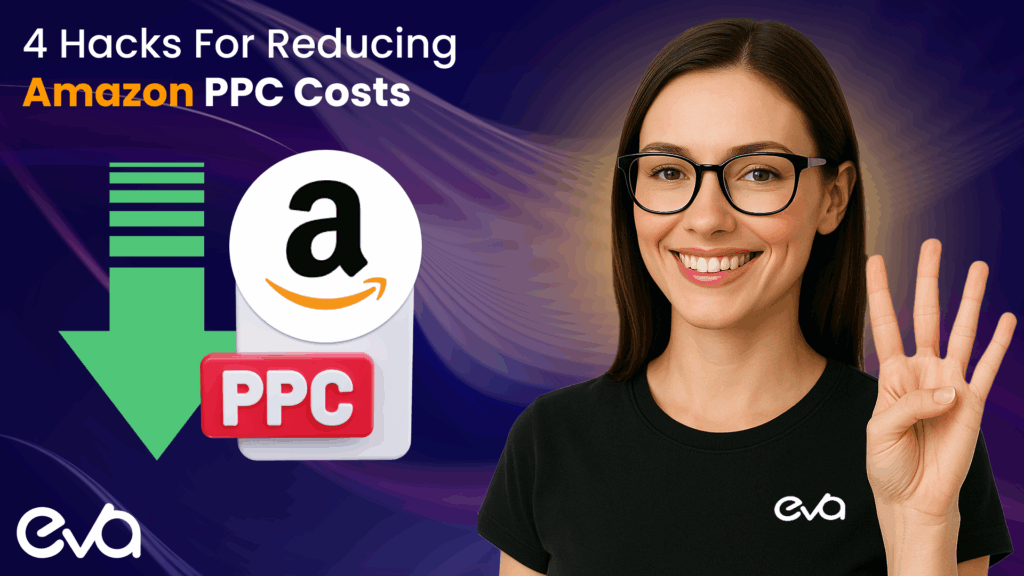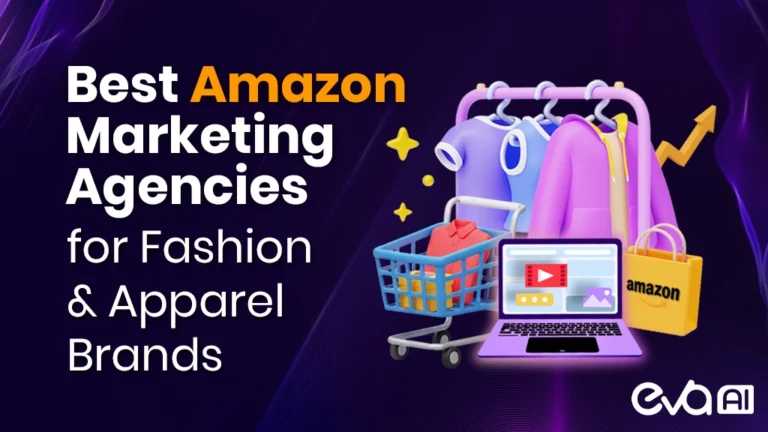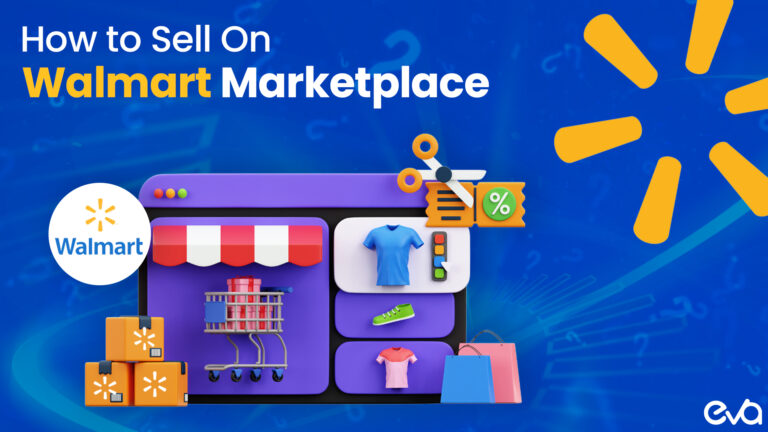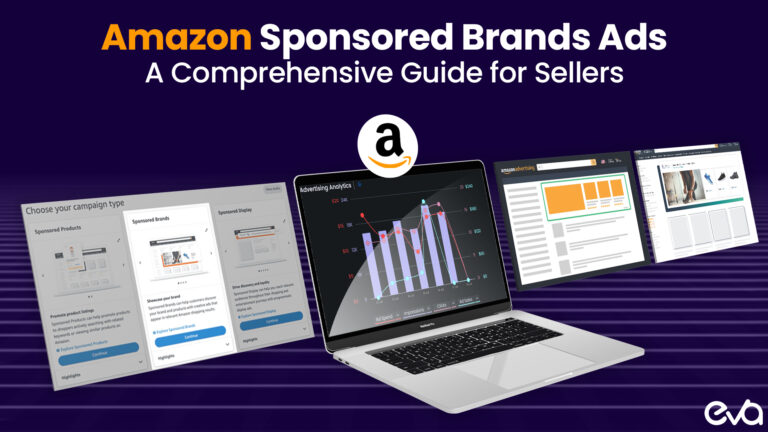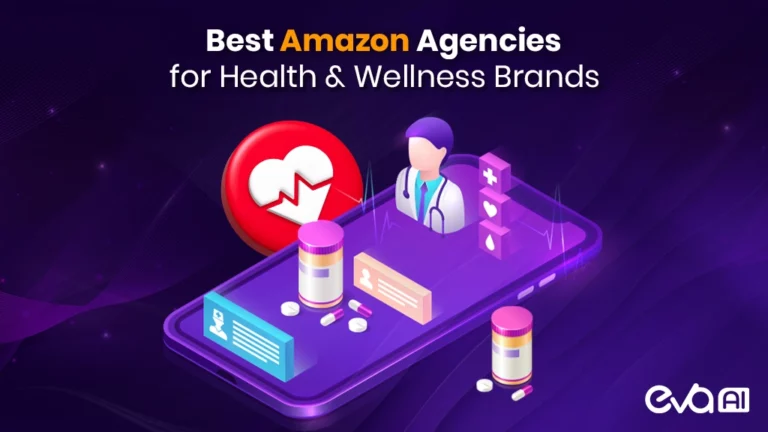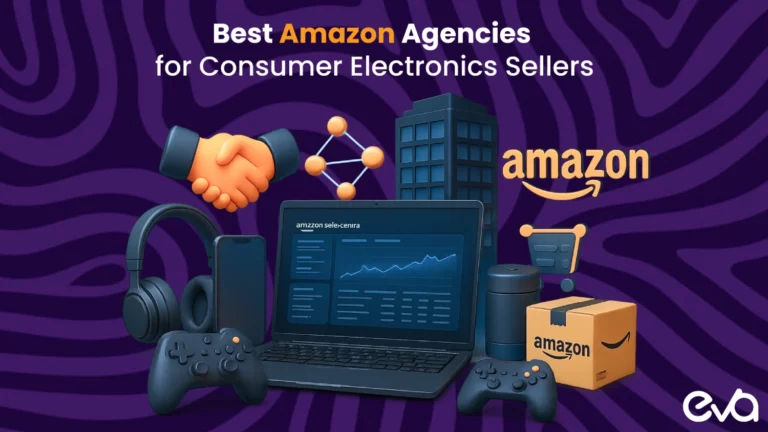Are you tired of spending too much on Amazon PPC without seeing the desired results? Are you frustrated with sacrificing quality to save costs?
Well, have no fear! You can cut down on your Amazon PPC costs without compromising the quality of your ads. In this blog post, we share 4 proven tips that will help you do just that. So please read on and start saving your advertising budget!

Discover How To Supercharge Your Profits From Amazon & Beyond
Tech – unlock more revenue, increase efficiency & maximize profitability with integrated AI solutions
Agency Services – our ex-Amazonian team provides key insights, expertise & handles everything for you from A-Z
3PL Fulfillment Solutions – real-time inventory management connected to Eva tech across Amazon marketplaces
Table of Contents
How Much Does Amazon PPC Cost?
The answer, of course, varies depending on several factors, including the competitiveness of your product niche, the time of year, and your advertising budget.
Understanding how Amazon PPC (Pay-Per-Click) advertising costs are structured is essential to running a profitable business.
The average Amazon PPC cost-per-click (CPC) in 2025 is approximately $0.98, up from $0.71 before 2020. However, CPCs can vary widely—typically ranging from $0.10 to $6.00 per click, depending on your product, category, competition, and bidding strategy.
What Influences Amazon PPC Advertising Costs?
Several factors directly impact how much you’ll pay for Amazon PPC in 2025:
Product Category Competition:
Niches with higher competition (like electronics or supplements) demand higher CPCs because more sellers are bidding for top-ranking keywords.
Bidding Strategy:
- Automatic bidding relies on Amazon’s algorithm to adjust bids within your budget and ACoS targets.
- Manual bidding gives you control over individual keyword bids, often leading to more strategic (and sometimes lower) ad spend.
The 2.5 Rule:
A widely used formula estimates that your CPC should not exceed 2.5% of your product’s sale price. For example, if your item sells for $27.95, your target CPC should be around $0.70 or less to maintain profitability.
Campaign Type:
Not all ad formats perform equally.
- Sponsored Brands and Sponsored Display may cost more per click with varied performance.
- Sponsored Products usually deliver the highest return on ad spend (RoAS).

Automatic campaigns are less expensive but less effective, while manual campaigns are more expensive but offer more control over where your ads appear.
Recommended Amazon PPC Budget in 2025
Most experts recommend reinvesting at least 10% of your Amazon revenue into PPC advertising to stay visible and competitive. This benchmark helps maintain consistent traffic and sales growth, especially in saturated markets.
Key Metrics to Track Your PPC Costs
To optimize your Amazon PPC advertising cost, regularly monitor these critical metrics:
- CPC (Cost-Per-Click): How much you pay each time someone clicks your ad.
- ACoS (Advertising Cost of Sales): Your ad spend as a percentage of revenue generated from ads. Lower ACoS means higher profitability.
- TACoS (Total ACoS): Measures ad spend against total sales (including organic sales), offering insight into long-term ad impact.
- CTR (Click-Through Rate): Shows how well your ads are attracting clicks from shoppers.
Read More: 12 Common Myths About Amazon PPC
How to Reduce Amazon PPC Cost
- Create Tightly Themed Ad Groups with Just a Few Keywords Each
Creating tightly themed ad groups on Amazon is an effective way to reduce your Amazon PPC costs. By limiting the number of keywords in each group, you can more effectively target the right buyers. You’ll also avoid spending too much money on clicks that aren’t relevant or useful.
Additionally, carefully choosing your keywords and organizing them into specific groups will help you create more effective and targeted ads, driving better results overall.
- Bid on Keywords with a Lower Average Cost-Per-Click (CPC)
To reduce Amazon’s PPC costs, bidding on keywords with a lower average cost-per-click (CPC) is essential. This means doing your research and carefully analyzing the different CPCs for different keywords.
You should focus on identifying keywords with a low CPC that are still relevant to your target audience and product offerings. You can maximize your ad visibility and improve your ROI without blowing your budget by targeting these lower-cost keywords.
With the right bidding strategy, you can effectively manage Amazon PPC costs and drive greater sales and profits. Additionally, you may also want to try bidding on less popular or long-tail keywords, which generally have lower CPCs and can still bring highly motivated users to your listings.
Ultimately, you will need to determine which tactics work best for your business, whether by investing in cheaper ads or putting more effort into Amazon SEO.
- Experiment with Different Bid Amounts to Find the Sweet Spot for Your Budget
When it comes to Amazon PPC costs, there is no one-size-fits-all approach. So to get the best results, it is essential to experiment with different bid amounts. At first, you may want to start with a reasonably low bid amount to test the waters and see how your product listings fare against the competition.
You can then gradually adjust this amount as you gain more data and insight into the auction system. It is also important to constantly analyze and optimize your Amazon PPC campaigns, experimenting with different keyword tactics and testing different bid amounts on a rolling basis. By taking these steps and being proactive about managing your Amazon PPC costs, you can find a balance that maximizes ROI and stand out among thousands of competitors on Amazon. - Use Negative Keywords to Block Unwanted Clicks and Minimize Amazon PPC Costs.
Amazon PPC costs can be a real pain for eCommerce businesses, especially small businesses. However, Amazon negative keywords can help you weed out unwanted traffic and reduce your PPC costs.
For example, suppose you’re selling women’s clothing. Then It’d be best to add negative keywords like “men” or “boys” to your ad campaigns so that you’re not paying for clicks from people who are not interested in your product on Amazon.
This will help you focus your budget on the people who are most likely to convert, saving you money in the long run. So if you’re looking to reduce your Amazon PPC costs, make sure to use negative keywords.
See Also: 4 Quick & Effective Tips to Boost Amazon PPC Conversion Rate
FAQ | Amazon PPC
Amazon pay-per-click (PPC) is an advertising type available to sellers on Amazon. It allows you to bid on relevant keywords and have your product ads appear in search results. When customers click on the ad, the seller pays a fee to Amazon. With PPC, sellers can reach more potential customers and increase sales. It’s an effective way to maximize visibility and reach targeted audiences.
You should launch Amazon PPC ads after optimizing your product listings to convert visitors into buyers. This includes creating an optimized title and description, adding high-quality images, and selecting targeted keywords. Once these steps have been completed, you can launch your Amazon PPC ads and target the right customers.
ACoS stands for “advertising cost of sale” and is a metric used to measure the success of Amazon PPC campaigns. It is calculated by dividing the ad spend by the sales revenue generated from those ads. ACoS helps sellers understand how profitable their campaigns are and helps them identify areas of improvement. By keeping track of ACoS, Amazon sellers can optimize their campaigns and increase profitability.
The Amazon PPC auction works by allowing sellers to bid on keywords. When customers search for a product, the ads with the highest bids are displayed first. Amazon then calculates the advertiser’s click-through rate (CTR) and Quality Score, which determines how much each advertiser pays. The higher the CTR and Quality Score, the lower the cost per click (CPC).
Yes, PPC ads can be an effective way for sellers to increase visibility and reach target customers. By optimizing product listings, conducting keyword research, and setting up campaigns, sellers can maximize their ROI. However, it’s important to track the performance of campaigns and adjust bids accordingly to ensure the ads are performing well.
Optimizing PPC campaigns involves a few key steps:
1. Sellers should identify the best keywords to target by researching relevant search terms.
2. Understanding the competition.
3. Next, they should create compelling ad copy and creative assets to attract customers.
4. Finally, sellers should adjust bids and budgets to ensure that their ads perform well and get maximum visibility.
Conclusion
Implementing these tips is a great way to start saving on your Amazon PPC costs. However, if you want to take your cost-cutting efforts one step further, consider opting for an amazon marketing agency. The entire team at an Amazon advertising agency is completely dedicated to your business. If you’re looking for someone to help you run successful Amazon PPC ads and grow your business to a higher level, then Eva is one of the preeminent Amazon marketing agencies with the perfect solution for your business.
You can go for Eva’s Free PPC Audit. With this Free Audit, you can easily see what areas of your whole Amazon advertising need improvement and get expert tips on each to get the best results. Feel free to contact us anytime to get your PPC audit.

